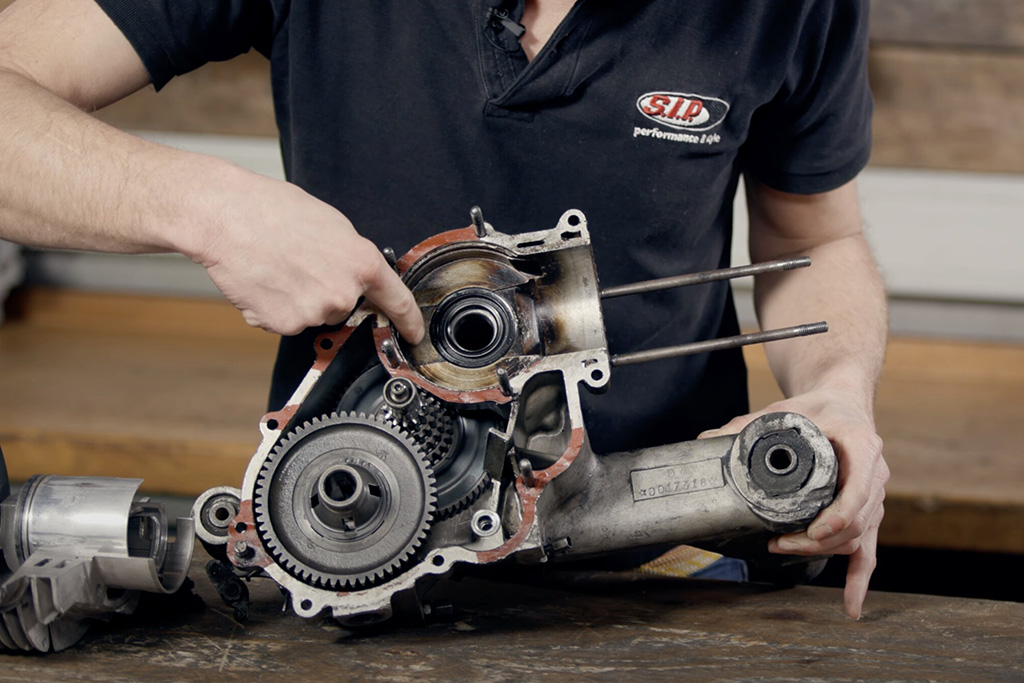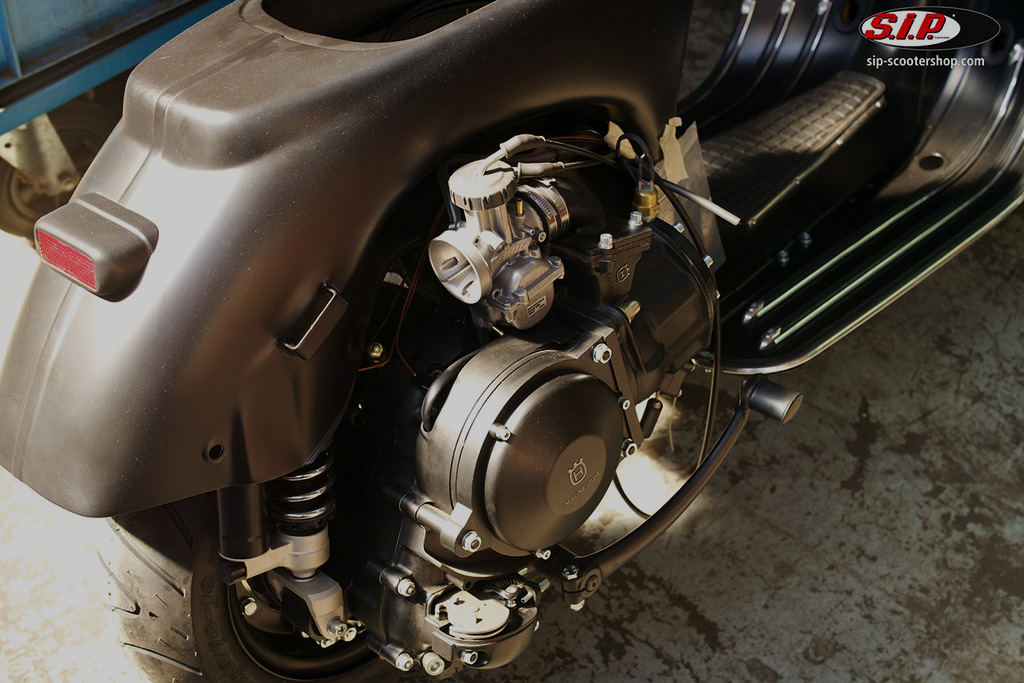What the heart means to a two-legged, the engine means to a two-wheeler.
We bipeds can suffer a heart attack, our two-wheeler an engine failure. Both symptoms are comparable: standstill. Both are shit!
So what can we do when our baby refuses service? What are the possible problems?
Vespa engine:
- does not start
- stutters while driving
- gives no or only reduced power
- goes out while driving
As experienced vespisti, we know that the forward motion of our scooter is based on explosions in the engine’s cylinder. What does it take for these explosions to occur?
Combustible gasoline-air mixture, or more precisely, compressed, compressed mixture that burns well. And, of course, sufficiently strong ignition spark (blue color, not orange) at the right time.
The engine does not start because it does not manage to set the sequence of chain reactions in motion.
Can it be formulated so simply? Yes, it can, because it is exactly like that. What must be done to locate the fault?
The most banal, simple mistakes
The following is a list of mistakes that can quickly creep in and yet lead to great damage. Therefore it is best to always check:
- Fuel tap open or closed
- ignition key in correct position
- does the kickstarter feel the same as always? (If yes ⇒ good sign, if no ⇒ major problem/workshop).
- Gasoline in the tank
- air supply through the tank cap possible
- plug connector is tight enough
- insulator on spark plug (white porcelain body) clean
- check correct distance of spark plug gap (thickness approx. of an EC-card)
- Spark plug wet/dry? (wet ⇒ drunk, dry ⇒ supply of mixture too low)
- Vespa not moved for a long time – fuel evaporates, oil does not. Accordingly, the oil content in the mixture could be too high (does not burn)
Worst case, which every scooter rider notices immediately: piston seizure, engine blocked, no quick roadside assistance possible.
Together with the breaker ignition, the carburetor is the most vulnerable part of the two-stroke engine.
Small cause, big effect. This describes exactly the small problems that can prevent the engine from starting.

What to do when the engine has run dry:
Extra tip from the moth box, dusted off and reissued:
- Turn off the fuel tap (to be on the safe side, remove the fuel hose).
- unscrew spark plugs
- kick starter for several minutes, pull throttle cable fully. More revolutions are achieved by pushing the scooter a short distance in this condition
- Air can flow through the engine and purge the whole system
If droplets form at the screw holes for the spark plugs or fog escapes, this would be a sure sign of a flooded engine.
The engine still won’t start?
Then we remove the carburtor and disassemble it. Dirt should be visible, for example if the scooter has been standing for a long time:
- contaminated/clean fuel, the difference can be smelled, must be replaced (old fuel will still burn if the scooter is driven diligently)
- rust loosened in the fuel tank might have slipped through the carburetor filters
- clean float chamber/needle and make it passable
- blow through nozzle, view through hole must be unobstructed (without scoring)
- better than blowing would be sucking (unhygienic and tastes disgusting, but is more effective)
Another problem
Assuming the engine runs for a short time and then dies again, a capacitor could be broken.
Oxidized ignition blades or lint can also be considered as a cause (of course only with breaker ignition). This problem does not exist with electronic ignition. But other components can cause trouble, for example the CDI (Capacitor Discharging Ignition ⇒ in combustion engines type of ignition, capacitor charged by DC voltage, sudden discharge via the ignition transformer).
Preventive measures
Treat your Vespa as if it were an airplane. Yeah, sure, a bit of an exaggeration.
Still applies:
Maintenance, maintenance and again maintenance, and regularly.
This should become as routine as breathing.
Not to forget: the wiring of the scooter. It must not show any damage/breaks in the insulation; check for loose contacts.
Conclusion
There are hundreds of causes that can lead to an engine breakdown. These tips are intended to provide a (relatively) quick remedy. If none of the suggested measures are successful, usually only the workshop can help.
It is still true, and always true:
Safety-related faults and/or neglect can lead to serious danger for involved road users. But we smart Vespisti don’t need to be told that.
The engine is unfortunately not the only part that can cause problems, we have also already covered another accident possibility in an article: Vespa breakdown tires


